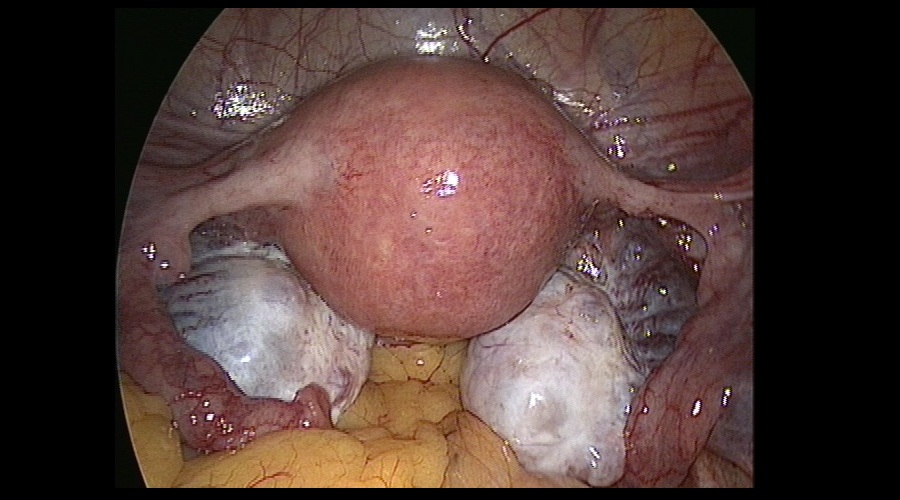A dermoid cyst is a saclike growth that is present at birth. It contains structures such as hair, fluid, teeth, or skin glands that can be found on or in the skin.
Dermoid cysts grow slowly and are not tender unless ruptured. They usually occur on the face, inside the skull, on the lower back, and in the ovaries. Superficial dermoid cysts on the face usually can be removed without complications. Removal of other, more rare dermoid cysts requires special techniques and training. These rarer dermoid cysts occur in four major areas:
- Dermoid cysts in the brain: Dermoid cysts occur very rarely here. A neurosurgeon may need to remove them if they cause problems.
- Dermoid cysts in the nasal sinuses: These are also very rare. Only a handful of cases involving dermoid cysts located here are reported each year. Removal of these cysts is extremely complicated.
- Ovarian dermoid cysts: These growths can develop in a woman during her reproductive years. They can cause torsion, infection, rupture, and cancer. These dermoid cysts can be removed with either conventional surgery or laparoscopy (surgery that uses small incisions and specially designed instruments to enter the abdomen or pelvis).
- Dermoid cysts of the spinal cord: A sinus tract, which is a narrow connection from a deep pit in the skin, usually connects these very rare cysts to the skin surface. This type of dermoid cyst can become infected. Removal is often incomplete, but the outcome is usually excellent.
Dermoid Cyst Causes
Dermoid cysts are caused when skin and skin structures become trapped during fetal development. Their cell walls are nearly identical to those of the outer skin and may contain multiple skin structures such as hairfollicles, sweat glands, and sometimes hair, teeth, or nerves.
When to Seek Medical Care
A doctor should be contacted in the following situations:
- A cyst becomes painful or inflamed
- A cyst grows or changes color
- Removal is desired for cosmetic reasons
Typically, removing a dermoid cyst is not an emergency procedure. If a dermoid cyst ruptures, becomes inflamed, or causes pain or fever, a person should seek immediate medical advice. Depending on the severity of pain or discomfort, a person might also consider visiting a hospital’s emergency department.
Exams and Tests for Dermoid Cysts
Prior to removal of superficial dermoid cysts on the face, a person should know the difference between cysts and other facial growths.
- Because dermoid cysts stem from birth and grow slowly, a person usually notices them during childhood or early adulthood.
- Dermoid cysts are firm and painless unless ruptured.
- Dermoid cysts are not attached to the overlying skin.
In rare cases, a dermoid cyst extends into a structure deeper than skin, such as a facial cavity or an orbit. Some doctors recommend a CT scan or other imaging studies for these cases. This decision depends on the doctor’s suspicion of a deep-level cyst and after a determination of risk versus benefit.
